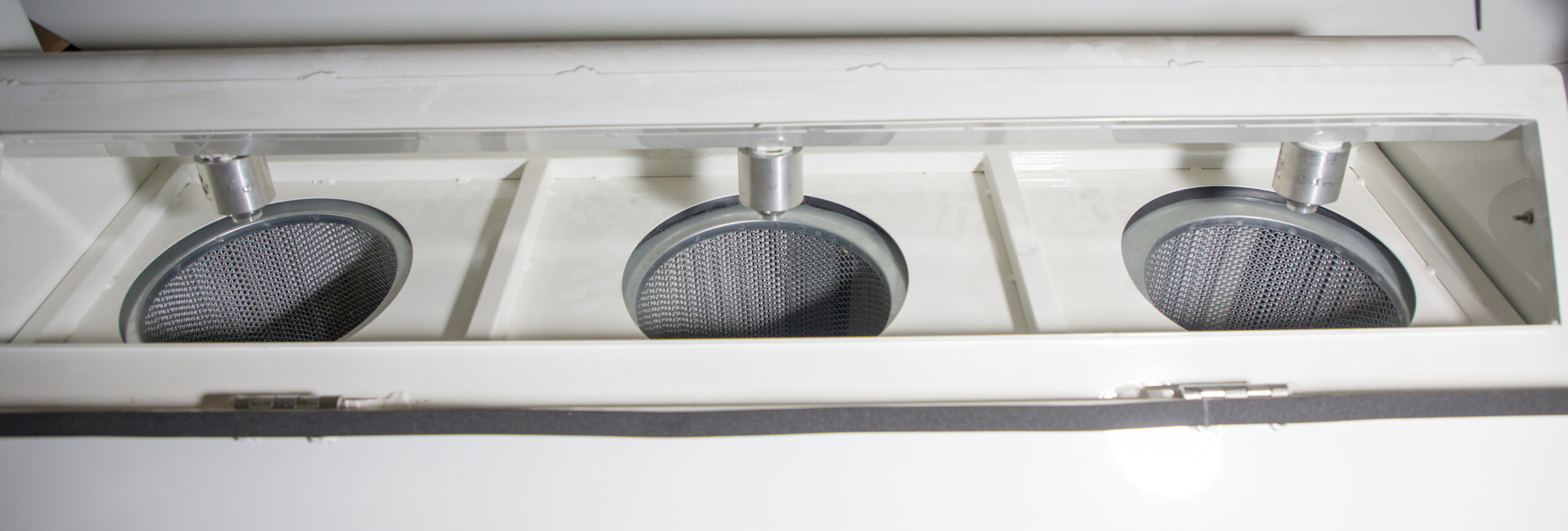At Spruce Up, technology isn’t an add-on. It’s the foundation.
Every machine we build is powered by thoughtfully engineered systems developed through global R&D and validated through years of field experience. Over the years, we’ve developed proprietary innovations, secured a patent, and introduced breakthrough technologies – many for the first time in India.
We don’t stop at innovation, we refine constantly, iterate relentlessly, and engineer every detail with a focus on usability, durability, and results. What truly sets us apart is how these systems perform on the street. Proven, reliable, and operator-friendly, our technology earns trust where it matters most: in daily use, across cities, campuses, and highways.
Discover the innovations that make Spruce Up stand out.
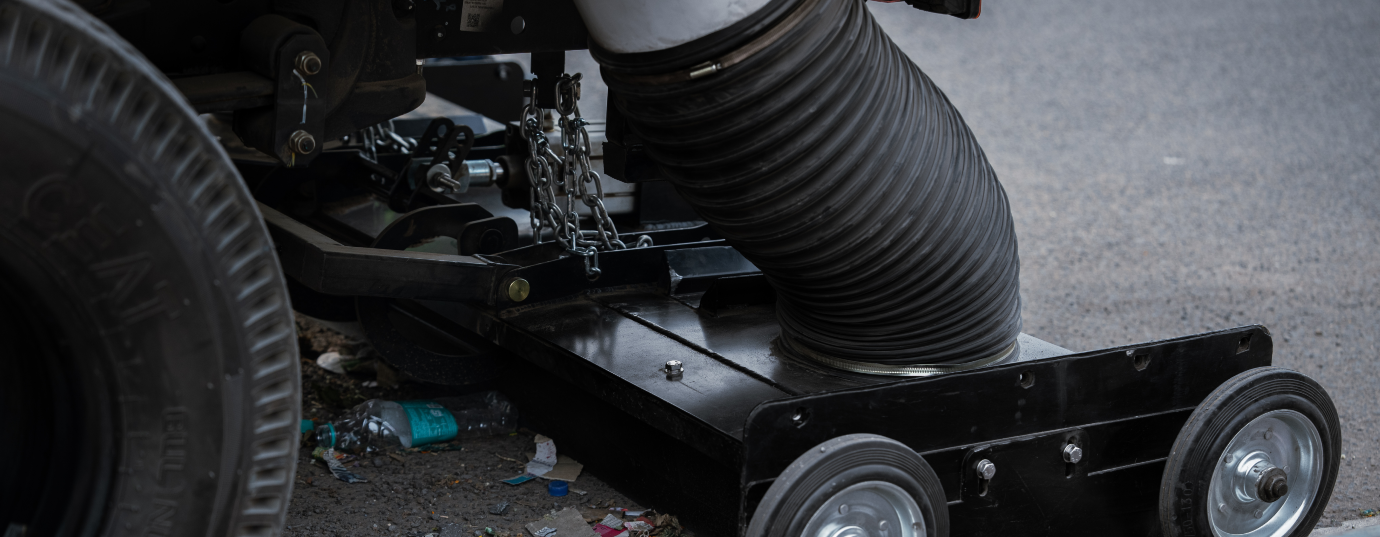
Technologies in Spruce Up
Air blaster regenerative sweeper head
A rear-mounted, dual-chamber pickup head channels the impeller’s airflow into a razor-thin “air-knife” slot set about 1 inch (25 mm) above the pavement. The high-velocity sheet races across the surface at 300+ km h-1, driving into the microscopic pores and texture of the road to lift embedded fines as well as bulky litter; a suction hose immediately recovers the entire stream. Front and rear skirts seal the chamber so virtually every particle is captured and cycled to the hopper, delivering a true vacuum finish across the full sweeping width- something no mechanical broom, pure-vacuum machine, or crew of manual labourers can replicate.
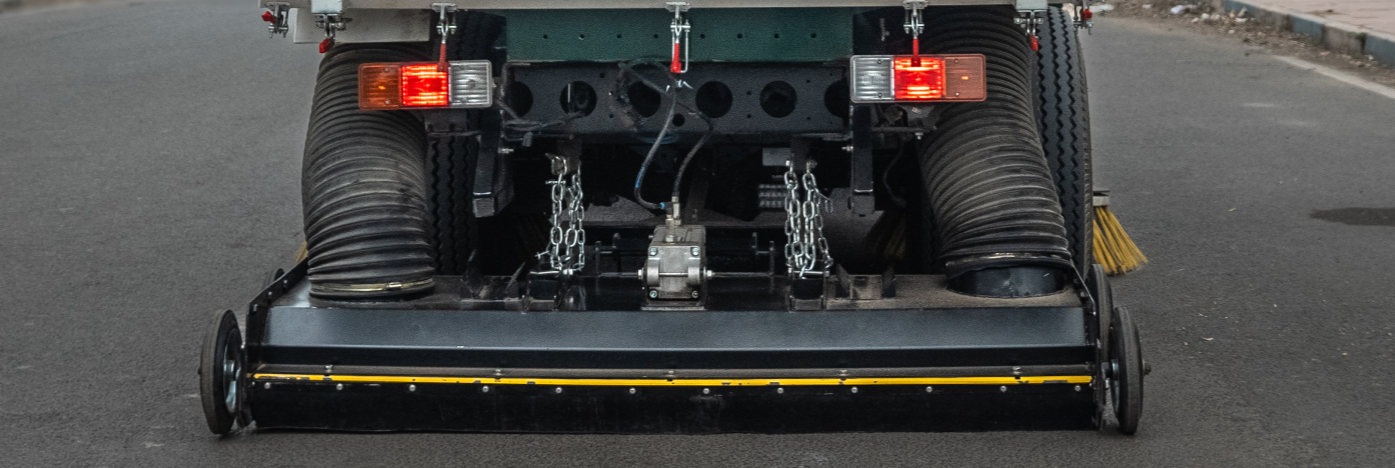
Vacuguard negative pressure control
Approximately 15% of the impeller discharge is bled off through auxiliary filters and vented to the atmosphere. This controlled diversion maintains a gentle negative pressure inside the sweeper head, so any micro-gaps pull ambient air inward rather than pushing dust outward. Simple regenerative machines without such regulation must juggle harder-to-tune high-pressure jets and often struggle to keep dust fully contained. VacuGuard avoids that compromise while adding no extra energy load.

Cycloshield six-stage filtration stack
Material leaves the pickup head and passes through six sequential defences: gravity-assisted drop and misting knock down coarse grit; a roof-mounted debris grill blocks oversized trash; a primary cyclone strips most remaining silt; a linear inertial separator shears moisture and ultrafines; a secondary micro-cyclone further polishes the airstream; and finally, a bank of engine-warmed cartridge filters captures PM10 particles. The cleaned air exhausts to the atmosphere rather than looping back to the impeller, helping preserve the negative pressure that keeps the head dust-tight.

Pulse Clean cartridge bank with moisture guard
Two rear-mounted pleated cartridges sit beside the warm engine cowling and receive air that has already passed through the inertial separator and cyclone. In muggy monsoon conditions, where ambient humidity can reach 90%, the airstream arrives at the filter bay at a much drier 45–55% RH. Every 60 seconds, a 6-bar air reservoir fires a reverse pulse that dislodges dust before it embeds. Because the media remains warm and powder-dry, airflow remains within ±5% of its starting volume for the entire shift. In contrast, competing sweepers often experience filter caking and a 30–40% drop in airflow when conditions turn wet.
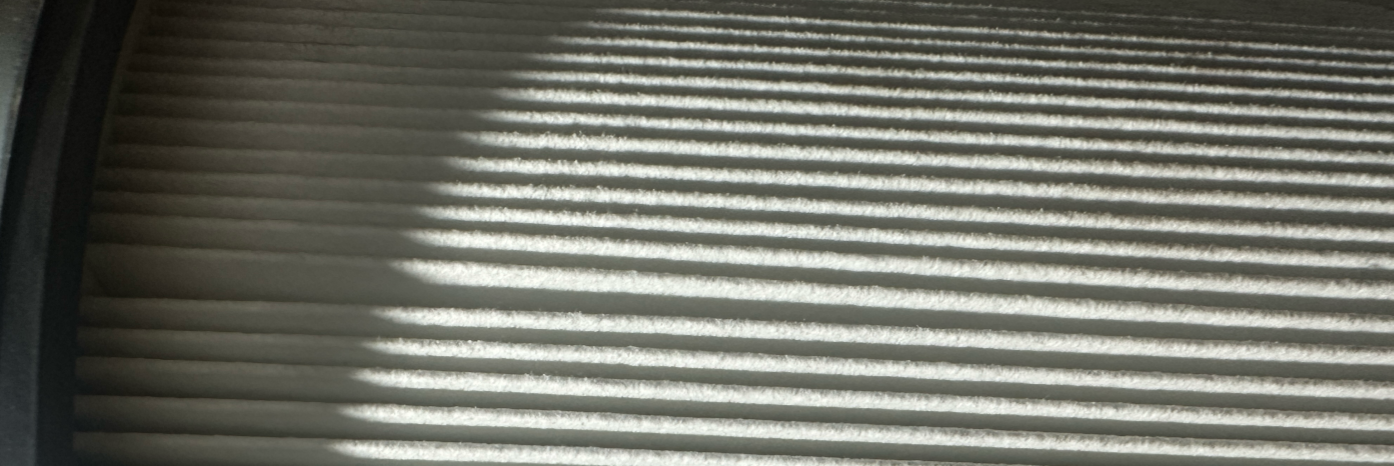
SwiftServe rear architecture
Engine, hydraulic valves, cartridge bank, impeller inspection hatch, and pickup-head linkages are clustered within a compact rear bay. Wide gull-wing doors and slide-out trays place every daily checkpoint at belt height. Eliminating the need for cab tilt, pits, or crawling this makes routine maintenance straightforward and hassle-free, so the truck spends more time sweeping and less time in the workshop.
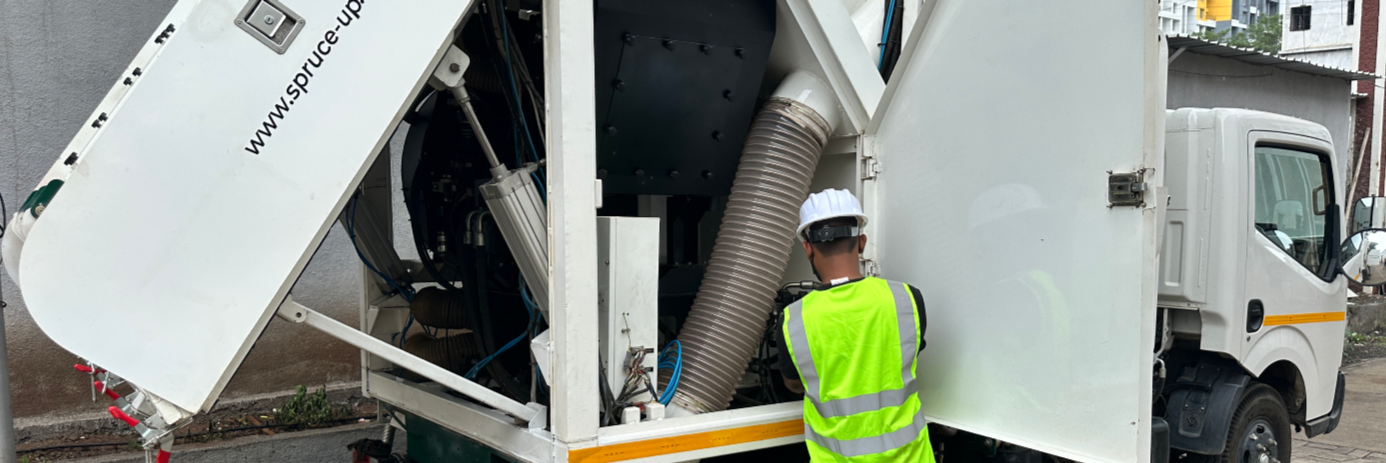
Three-Axis 270° Telescopic Boom
A stainless-steel telescopic boom carries a wide-diameter suction hose through three powered axes: vertical lift, horizontal swing, and forward extension, offering 270° reach from a single chassis mount. The rigid structure prevents sag, kinks, and turbulence, maintaining stable suction flow even with wet, dense, or mixed debris. Operators control hose movement via fingertip switches on the nozzle handle, eliminating manual dragging or lifting
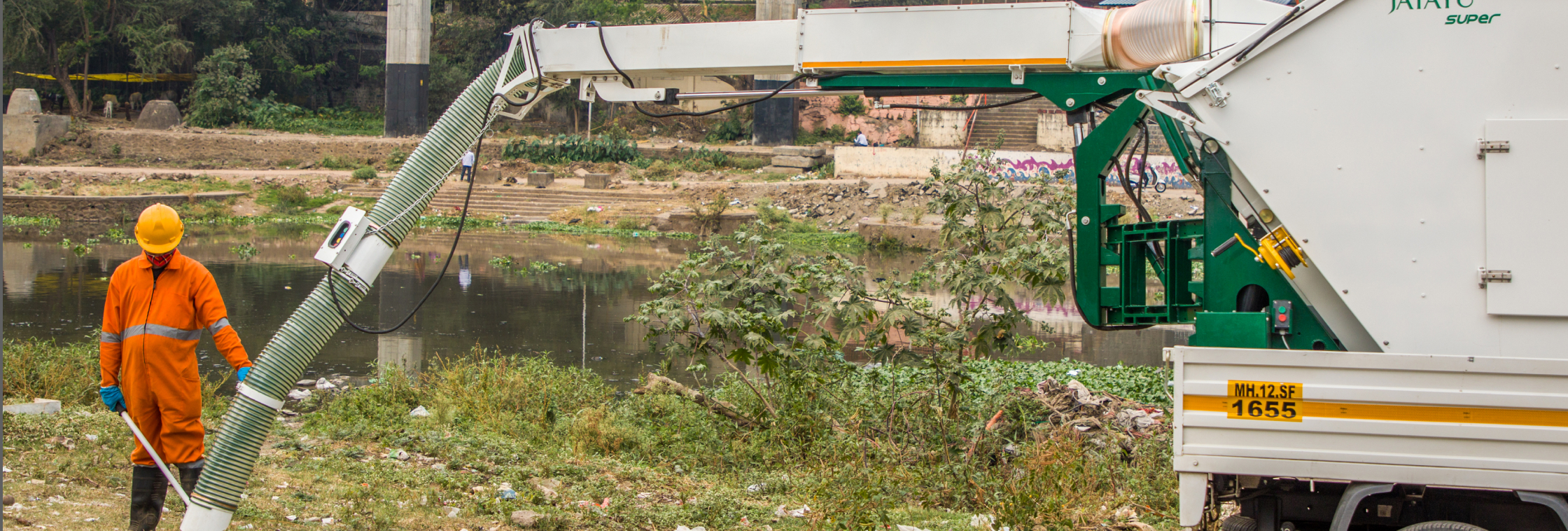
High-Dump Hopper
Jatayu Super’s 1.6-meter hydraulic high-dump system eliminates the manual burden of lifting, carrying, or tipping litter bags. Instead of using tear-prone sacks or waiting hours at distant dump yards, waste is transferred on the spot into a tractor, tipper, or support vehicle, with no handling, no spillage, and no downtime. The reinforced chassis and boom lift the entire hopper safely and steadily, even with heavy, mixed debris.
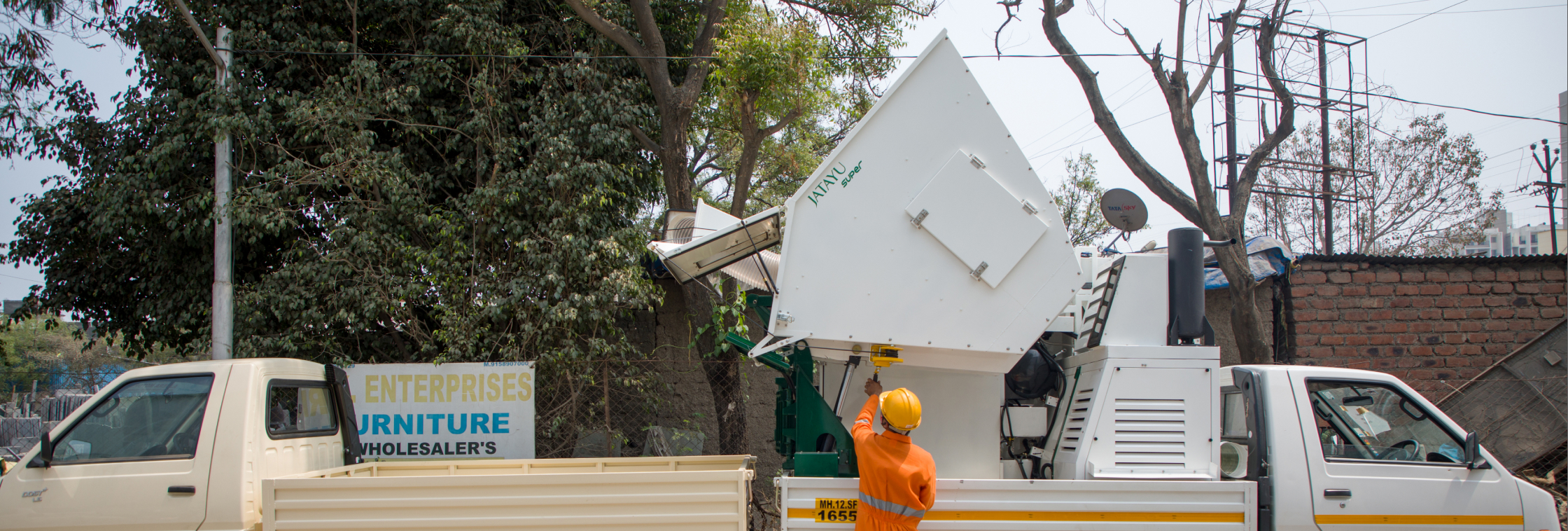
Powerful Variable-RPM Diesel Engine
Jatayu Super and HD utilize a dedicated 20 HP diesel engine to drive the suction blower, which is fully independent of any host vehicle. This self-powered system lifts dense and bulky litter that typical battery or vehicle-powered vacuums can’t handle. Variable RPM control allows operators to fine-tune suction intensity in real-time. This conserves fuel on clean stretches or ramps up torque for heavy waste zones. At low RPM, fuel use drops to 2 L/hr; at peak, it delivers maximum pull without performance lag.
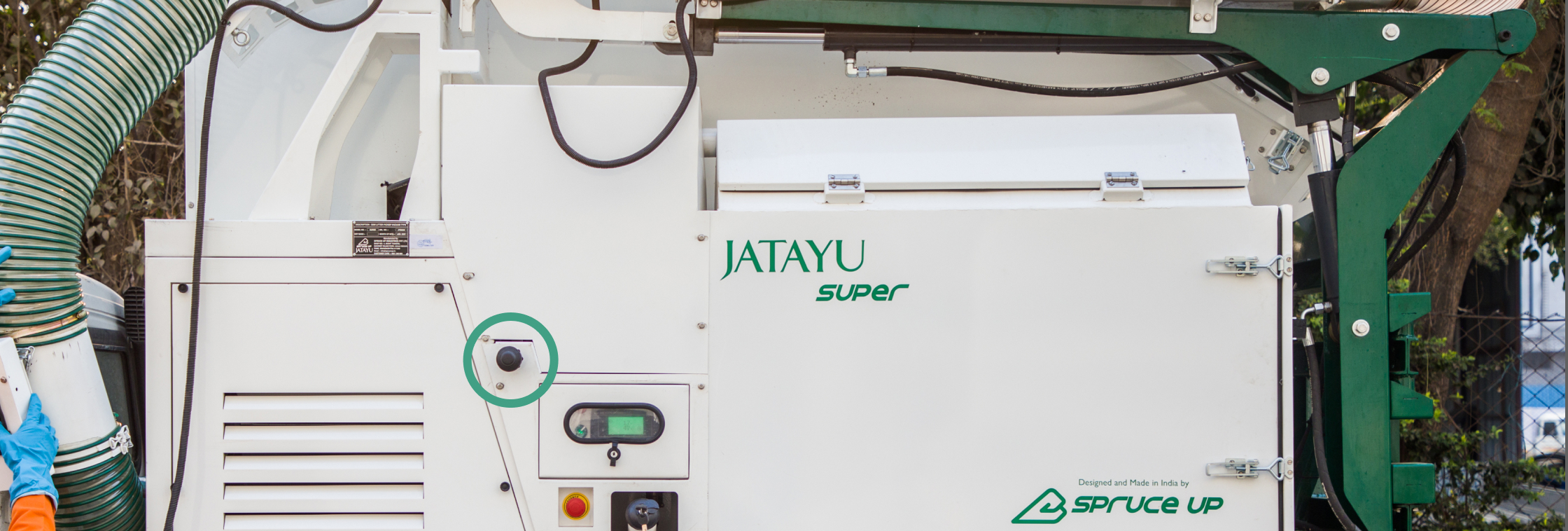
Pulse Jet Cartridge Cleaning
Jutayu Super features an onboard compressor-driven pulse jet system that automatically cleans its PM10-rated pleated filters with high-pressure air bursts. Triggered by a push-button, it dislodges embedded dust without requiring the removal of filters or pausing work. Unlike manual cleaning or mechanical vibration, this method delivers deep, consistent cleaning on the go, preserving suction power, extending filter life, and eliminating operator exposure to dust. It’s a no-contact, no-downtime solution engineered for dusty conditions.
